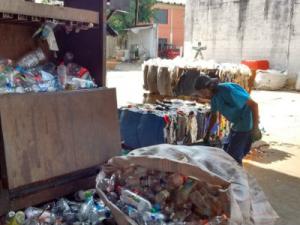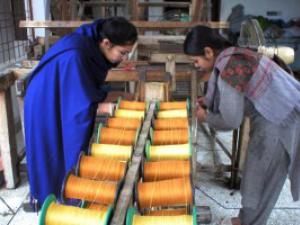GOOD PRACTICE: Defence of the rights of street workers (Brazil).
Discussion details

As part of an EC funded project, a reference centre for informal workers was established in the Centre Gaspar Garcia of Human Rights (CGGHR). The CGGHR acted as a partner of the public defender of the State of Sao Paulo to provide legal advice and function as a centre for popular movements. It further provided monitoring, training and organisational activities with specialised but related institutions.
The beneficiaries of the action were the low-qualified and low-income street workers who were unable to meet the requirement of the 2008 law on “individual micro-enterprise”. The law was intended to facilitate the formalisation of these activities by registering workers as self-employed professionals and having them contribute to social security.
An important concept that emerged and consolidated during project implementation was the link between the constitutional right to work and the right to the use and occupation of urban space. The debate goes beyond the simple right of access of street workers to public spaces and leads up to the right to transform the city itself. This new conceptual framework was the great and pioneering innovation of CGGDH and its contribution to the struggle of the street workers and the preservation of urban environment.

Over the years, the situation of street workers in Sao Paulo had progressively worsened including their criminalization in 2011. The initial project research action and diagnosis included the provision of legal services. The project also seized the opportunity to propose a Public Civil Action against the attitude of the city government of São Paulo. The city’s discriminatory attitude, with the clear intention of eradicating the street vendors in the city, provided room for the street workers collective initiative.
Among the challenges of street workers that CGGDH identified were the individualistic character of the street workers and the tradition of corruption, violence and discredit included in most of the workers organisations (unions and associations). Their relationships were continually overshadowed by actions for some political electoral benefit, extortion and other corruption mechanisms on the part of civil servants and the police. It was in this context of persecution, criminalization and violence that CGGDH started the implementation of the project. The CGGDH, based its methodological principles on popular education, social participation and the effective role of organized groups.
The Forum of Street Vendors that CGGDH proposed was created as an autonomous supra-union collective space related to existing associations and patronage networks. The Forum became a new collective social agent, entering into new alliances and partnerships, with visibility and voice and recognised as a legitimate political collective actor

A key initial step of the project was the elaboration of a report on the violations of the rights of street workers in the informal economy of the city of São Paulo. The report was published in 2012 as a result of the research and diagnosis of the CGGDH. Planned as an initial activity, this action lasted throughout the first year of the project. The action ensured that research brought quantitative data and a description of specific situations together into a single publication. The report has become a reference and, according to the Public Defender Bruno Miragaia, was essential to the favourable ruling issued by the Judge in Public Civil Action, in 2012.
The interaction between academic knowledge, popular education methodology and the reality of the street provided the foundation for a rich process to build knowledge. The publication had an enormous impact, giving a different structure to the struggle. It has had symbolic importance - all street vendors wanted to have the report, which turned into a fighting instrument.
The report was very important to the relationship of the beneficiaries with the government. Its dissemination strategy included sending copies to all sub-prefects, experts, academia, and other entities. This first publication publicized the cause and legitimized the CGGDH as an institution and was instrumental in the foundation of the Public Civil Action. The diagnosis led to the effective entry of CGGDH in the street workers field. "The compilation of rights violations made by CGGDH was very significant, making of a sentencing by a judge much more efficient than a first class action, with much more data" (Bruno Miragaia).
Street workers effectively use the document "as a personal guidebook". The publication of the report and an accompanying book was very important for street workers because a strong work is required to reverse the negative image of the street workers.

The book consists of three parts. The first part humanizes the street workers and includes six life stories. The second part tells experiences of organizing (the Forum, the Public Civil Action, the Working Group with the Municipality and experiences of other countries). The last part of the book deals with public policies in different places: New York, Durban, India, Porto Alegre and Sao Paulo. It is a publication, aimed at all audiences, with a nice layout. "The book is beautiful, makes a collection of the lives of these people and values them" said a woman interviewed by the evaluation team. The book is in great demand by people from all over Brazil.
The work to reverse prejudice and criminalization of street workers is essential and CGGDH has contributed to this. The publications were disseminated in the Public Defender's Office, and used for requesting registration of the materials by other human rights defenders in several places. "It's good that defenders, judges, prosecutors know that these people have rights, thus advancing the protection of street workers" (Bruno Miragaia). The role of disseminating the information that CGGDH prepared is critical and needs to be expanded.
The CGGDH played a major role in society and this was an effective strategy. Prioritising research and communication helped a great deal. It humanized the informal workers and helped to address the criminalization and prejudice.
________________________________________________________________________________________
Identification of Innovative Approaches to Livelihood Enhancement, Equity and Inclusion of People Dependent on the Informal Economy
Volume 1: Good Practices and Lessons LearnedExtracted from 33 Projects Selected Under the 2009 EC call for Proposals:“Investing in People. Promoting social cohesion, employment and decent work. Support for social inclusion and social protection of workers in the informal economy and of vulnerable groups at community level”
March 2016
By Jacques Charmes, Mei Zegers
Log in with your EU Login account to post or comment on the platform.